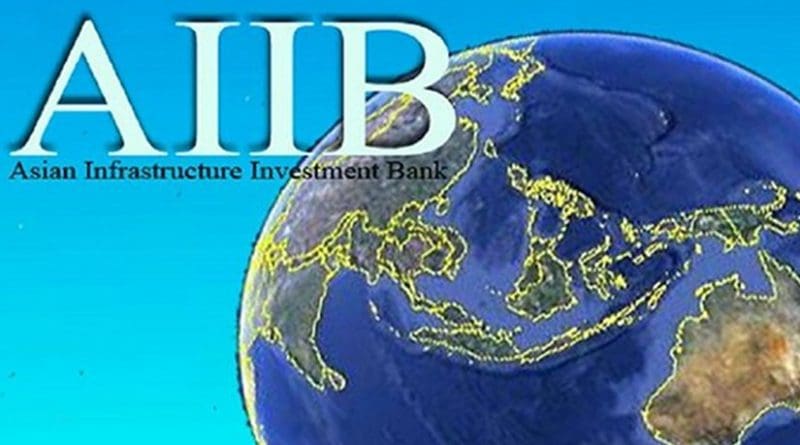ASEAN+3 Financial Cooperation And AIIB: Next Steps Forward – Analysis
By RSIS
ASEAN+3 Regional Financial Safety Net and the Asia Infrastructure Investment Bank (AIIB) are making good progress in strengthening their operations and in cooperating with and complementing global institutions. What are the next steps?
By Pradumna B. Rana*
THE FIRST half of this year saw two notable developments that have gone unnoticed by analysts and commentators. They relate to the ASEAN+3 Regional Financial Safety Net (RFSN) – comprising the Chiang Mai Initiative Multilateralisation (CMIM) and the ASEAN+3 Macroeconomic Research Office (AMRO) – and the China-driven Asian Infrastructure Investment Bank (AIIB).
The first significant development occurred on 9 February 2016 when the AMRO, the independent surveillance unit of the ASEAN+3 countries, was upgraded from a company registered in Singapore to an international organisation which is not bound by the legal system and practices of any one particular member country. The AMRO Agreement had been approved three years ago and it has now been ratified by all 13 members. The AMRO, therefore, has the mandate to conduct surveillance of ASEAN+3 member countries either individually or collectively. This will contribute to macroeconomic and financial stability in the region. Also with the upgrading of AMRO, the possibility that the US$240 billion crisis fund, awkwardly named the CMIM, will be utilised when the next financial crisis hits the region has increased. This fund was not used when the global financial crisis hit the region in late 2008.
AIIB’s Forthcoming First Annual Meeting
The second development of note is the first annual meeting of the AIIB slated to be held in Beijing on 25-26 June 2016. This meeting of the bank’s board of governors and board of directors which is being held only a few months after the bank became operational indicates how quickly things are moving in the institution. The main agenda of the meeting is to elect the constituent directors of its innovative non-resident board. The meeting will also draw up rules for operation, financing, and human resources. Views on infrastructure finance will also be exchanged. Soon after its establishment, the AIIB board is expected to approve the three projects that were recently announced.
The AIIB has 57 founding members. Recently, the AIIB President Jin Liqun announced that another 30 countries were waiting to join, 20 of which had expressed “firm commitment”.
By contrast, the major US initiative in the Asia-Pacific region appears to be stuck. Hillary Clinton, who has claimed democratic nomination, has said that she “opposes the TPP in its current form” although in the past she had said that the deal was a “gold standard” of trade deals. Donald Trump, the presumptive republican nominee, has mentioned the possibility of building a wall along the southern border and abrogating all trade treaties of the country. It is worth noting that withdrawal from trade agreements does not require congressional approval.
Complementarity and the Next Steps
In addition to strengthening their operations, the new regional institutions in Asia are deepening their cooperation and complementarity with global institutions. They have not participated in a “race to the bottom” to upstage existing global institutions as some had initially feared.
Cooperation makes sense because both global and regional institutions have their comparative advantages: Cross-regional expertise and experience plus institutional memory in the case of the former, region-specific knowledge and proximity in the case of the latter. Also demand for finance is sufficient for both of institutions to co-exist.
As early as 2000 when the ASEAN+3 finance ministers had initiated their “self-help” measures they had guided that these measures “should supplement the existing international facilities” and the way that complementarity was promoted in the CMIM was by requiring the existence of an IMF-supported program to provide assistance in excess of a certain percentage of maximum access. Initially, only 10 per cent of the maximum access was readily available. This has now been increased to 30 per cent and a task force has been established to study if further increases are justified.
My research finds that the present ad hoc modality of cooperation between the ASEAN+3 RFSN and the IMF is unlikely to be successful and recommends a more structured form of cooperation as in Europe. This involves three cooperative activities between the ASEAN+3 RFSN and the IMF: (i) joint analysis and evaluation of applications for funding; (ii) joint AMRO-IMF missions, joint surveillance, and jointly developed conditionality; and (iii) co-financing of programmes with amounts determined on a country-specific basis.
Co-financing Activities
The three projects that the AIIB has announced to build transport networks in Central Asia and Pakistan are to be co-financed with various multilateral development banks such as the Asian Development Bank (ADB), World Bank, and the European Bank for Reconstruction and Development (EBRD). Co-financing activities are mutually beneficial and should be encouraged further.
The AIIB should also collaborate in knowledge sharing and capacity building with other multilateral development banks as this will help address the concerns raised in some quarters regarding transparency, governance, accountability, and environmental standards that will be adopted by the AIIB. At the global level, like other multilateral development banks, the AIIB should seek to participate in the meetings of the OECD’s Development Assistance Committee (DAC) which coordinates foreign assistance programmes. The BRICS should also provide data on their official development assistance to the DAC.
Going forward, as the world globalises further, other developing regions of the world are likely to establish regional institutions to provide global public goods. An important lesson for these countries from Asia’s experience is that such institutions should find ways of cooperating with global institutions instead of trying to upstage and replace them.
*Pradumna B. Rana is Associate Professor and Coordinator of the International Political Economy Programme in the Centre for Multilateralism Studies at the S. Rajaratnam School of International Studies (RSIS), Nanyang Technological University, Singapore.

